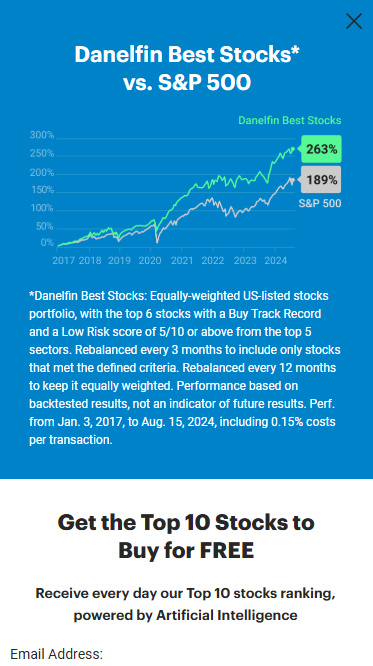When evaluating AI trading platforms, compatibility and integration are crucial elements. A platform that seamlessly integrates with your existing tools and systems as well as workflows will significantly increase efficiency and effectiveness. Here are 10 top suggestions to help you assess the compatibility and integration between these platforms.
1. Check Brokerage Integration
Supported brokers - Make sure that the platform is integrated with your brokerage or trading account.
Trade execution: Find out whether the platform allows direct trade execution through the integrated broker.
Account synchronization: Verify that the platform can update in real-time balances and positions of your account as well as transaction histories.
2. Examine API Accessibility
API access: Check that the platform has an API that developers can use if they would like to automate workflows, or create customized tools.
API documentation: Look to see if there are clear examples of how the API can be used.
Rate limits. Make sure that the API you're considering has reasonable limits on rate and can handle the volume of your use.
3. Evaluation of Integration Tools from Third Parties
Popular tools: See whether your platform is compatible with well-known tools such as Google Sheets or Excel.
Import and export of data. Ensure the tool can import and export data easily from other tools.
Extensions and plugins: Make sure that the platform allows for extensions or plugins. They add features.
4. Test Compatibility with Operating Systems
Desktop compatibility. Make sure your preferred operating system (Windows, macOS, Linux) is compatible with.
Mobile compatibility Check if the platform provides an application for iOS or Android.
Web-based Access: Make sure you are able to access the platform via an internet browser to improve flexibility.
5. Examine Data Integration Capabilities
Data sources - Check that the platform can be linked to various sources of data (e.g. news feeds or market data, and sentiment on social media).
Real-time data feeds: Verify whether the platform supports real-time data integration for up-to-date analysis.
Verify the platform's capability to import data from the past.
6. Assess Cloud and On-Premise Compatibility
Cloud-based platforms: Ensure the platform is accessible from anywhere connected to the internet.
On-premises Solutions: If you would like to run your application on premises ensure the platform you choose to use is compatible.
Find out if the platform offers a hybrid option that combines both cloud and on premises capabilities.
7. Make sure to check for Cross Platform Synchronization
Device synchronization. Make sure that settings and data are synced across all platforms (desktops mobiles tablets).
Real-time updates: Make sure that changes made on one device are immediately reflected on other devices.
Access from offline: Find out if the platform allows limited functionality or data access in offline mode.
8. Examine the compatibility of trading Strategies
Algorithmic trading: Make sure that the platform you choose supports automated or algorithms trading strategies.
Custom indicators. Check whether the platform allows the use of scripts or technical indicators.
Strategy backtesting: Determine whether the platform allows backtesting trading strategies with historical data.
9. Assess Security and Compliance
Data encryption: Ensure the platform is using encryption to protect data during transit and in rest.
Authentication Check if the platform provides secure methods for authentication (e.g. Two-factor authentication).
Regulatory Compliance: Check if your platform complies the relevant regulations.
10. Test Scalability and Performance
Scalability is important. The platform must be able to handle the ever-growing amount of data, and numbers of users.
Performance under load: Check whether the platform responds under high-volatility conditions.
Resource usage: Find out if the platform efficiently uses the system resources (CPU memory, bandwidth, CPU).
Bonus Tips
Feedback from users: Search for reviews and comments from users when evaluating the platform.
Free Trial: Test the integration of the platform into the existing workflow and tools with trial or demo.
Customer Support: The platform needs to provide solid support in the event of integration problems.
Check these suggestions to determine the integration and compatibility between AI platforms for predicting and analyzing stocks as well as your current trading systems and ensure that they increase your trading effectiveness. See the top ai for trading info for more tips including incite, AI stocks, ai for stock trading, ai for trading, AI stock market, ai investment app, AI stock trading app, ai trading, chart ai trading assistant, ai investing and more.

Top 10 Tips For Evaluating The Speed And Latency In Ai Platform For Analyzing And Stock Predicting
Latency and speed are crucial factors when looking at AI stock prediction and analysis platforms, specifically for active traders, algorithmic traders, as well as high-frequency traders. Even milliseconds can affect the execution of trades and even profitability. Here are 10 top ways to measure the speed of the platform.
1. Evaluate the real-time data feeds
Speed of delivery of data - Ensure that the platform is able to provide real-time data with a minimal delay (e.g. a sub-millisecond latency).
Data source proximity – Check to see if your servers of your platform are within major exchanges. This can reduce data transmission times.
Data compression: Check if the platform is using effective data compression in order to speed up data delivery.
2. Test trade execution speed
Processing time for orders: This is the duration it takes for the platform to process and complete trades after you have placed an order.
Direct market access (DMA) Make sure that the platform supports DMA that lets orders be made directly to the exchange, without intermediaries.
Reports on execution. Verify that the platform provides detailed execution reports. The reports should contain timestamps on the submission of orders, confirmation of orders and fill.
3. Examine the Platform's Responsiveness
User interface (UI speed) Find out how fast the system responds to inputs for example, clicking buttons or loading charts.
Chart updates: Check to see if the charts and visuals are updated in real time without delay.
Mobile apps' performance If you are using a mobile app, make sure that it's at the same speed as a desktop version.
4. Look for networks with low-latency infrastructure.
Server locations The platform should utilize low-latency, high-speed servers that are close to major exchanges or financial hubs.
Co-location Services: Find out whether the platform permits co-location. This allows you to save your trading algorithms on servers that are close to the Exchange.
High-speed networks: Verify that the platform uses fiber-optic high-speed networks or any other low-latency technology.
5. Evaluation of Backtesting and Simulation speed
Test the platform's ability to analyze and process historical data.
Latency in simulation: Make sure the platform can simulate trades with no noticeable delays.
Parallel processing: Check that the system is running parallel processing, also known as distributed computing to speed complicated computations.
6. Evaluation of Latency in API
API response time Measuring how quickly the platform’s API responds (e.g. getting market data, or placing orders).
Rate limits: Make sure you know whether API has reasonable rate limits to prevent delays during high-frequency trades.
WebSocket support: Determine whether your platform is using WebSocket protocols for real-time and low-latency streaming of data.
7. Test stability of the platform under load
High volume trading scenarios Check the stability of the platform and its ability to respond by simulated trading scenarios.
Check the platform during times of high volatility on the market to make sure it can handle rapid changes in price.
Stress testing Check if the platform allows users to test their strategy in extreme conditions.
8. Evaluation of Connectivity and Network
Internet speed requirement: To achieve optimal performance, ensure that your internet speed meets the recommended speed for your platform.
Make sure there aren't any redundant connections.
VPN latency: If you are using a VPN be sure to check if it introduces significant latency, and if the service provides alternatives.
9. Make sure you are using Speed Optimization features.
Pre-trade Analytics: Be sure the platform offers pre-trade analysis to optimize order routing, execution speed and other factors.
Smart Order Routing (SOR). Check if the platform is using SOR to identify the most speedy and cost efficient execution sites.
Check the platform's tools to analyse and monitor latency in Real-Time.
10. Review User Feedback and Benchmarks
User reviews: Review user feedback in order to assess the platform’s speed and latency performance.
Third-party Benchmarks: Find independent benchmarks to compare the speed of a platform to its competitors.
Case studies: Check whether the platform has case studies, or testimonials, highlighting its ability to work with low-latency.
Bonus Tips:
Trial period: Try the demo or trial version for free to test the platform's speed and latency in actual scenarios.
Customer support - Check if there is a support service available for issues related to latency, optimization or other issues.
Hardware requirements: Find out if the platform needs specific hardware for optimal performance.
These suggestions will allow you to assess the speed and latency of AI stock-Predicting/Analyzing trading platforms. In this way, you'll be able to choose a platform which meets your requirements while minimizing delay. Low latency, especially for high frequency and algorithmic trading, is essential. Even minor delays have the potential to greatly impact profits. Check out the most popular inquiry about chart analysis ai for site advice including can ai predict stock market, chart ai trading, ai tools for trading, AI stock price prediction, best ai penny stocks, how to use ai for stock trading, ai options, AI stock predictions, best ai penny stocks, AI stock prediction and more.
